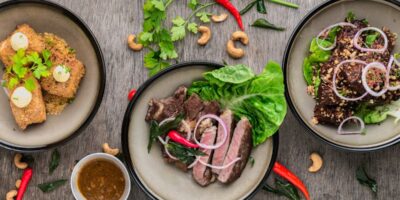Exploring the World of Menestra
Menestra is a staple dish in many Hispanic cultures, particularly in Spain and several Latin American countries. It’s essentially a type of hearty vegetable stew, rich in tradition and flavor. Primarily vegetable-based, menestra is often adapted to include a variety of local ingredients, which gives each version a unique touch. Understanding menestra involves exploring its ingredients, preparation methods, and cultural significance.
Origins and Cultural Significance
The origins of menestra can be traced back to Spain, where it is a commonly enjoyed dish. In Spanish cuisine, it is often associated with regions like Navarra and La Rioja. Both regions are known for their bountiful vegetable production. Menestra highlights the abundance of available produce and serves as a perfect canvas to use seasonal vegetables. Each version of the dish tells the story of its locality, making it as much a cultural emblem as a culinary one.
Ingredients
While the ingredients in menestra can vary widely depending on the region and the cook, there are some constants. Typically, it includes a mix of vegetables like asparagus, artichokes, peas, and green beans. Potatoes and carrots often find their way into the stew, adding depth and texture. In some versions, meat such as ham or chorizo is included to enhance the flavor.
Stock is a vital component of the dish, infusing the vegetables with a rich taste. Many recipes call for chicken or vegetable broth. Garlic and onions are the key aromatic elements, providing a foundation for the stew. A touch of paprika or saffron sometimes adds a warm color and subtle spiciness.
Preparation Methods
The preparation of menestra is straightforward but requires attention to detail. Vegetables are typically blanched to retain their vibrant color and nutrients. This process involves boiling them briefly and then plunging them into cold water. Afterward, the vegetables are sautéed with garlic and onions until everything is tender. The stock is then introduced to simmer, allowing the flavors to meld together.
If using meat, it is often cooked separately before being added back to the pot. This step ensures the meat is cooked properly and all elements of the menestra are given equal attention. The stew is typically simmered on low heat for a prolonged period to develop a robust depth of flavor.
Regional Variations
Region-specific variations of menestra highlight the adaptability of this dish. In Spain, the Basque version often includes broad beans and is sometimes enriched with eggs poached in the broth. Meanwhile, in Latin America, Ecuadorian menestra typically incorporates beans or lentils. This version is commonly served alongside rice and protein like chicken or beef, making it a complete meal.
Chilean menestra can include potatoes and is often thickened with a mix of flour and milk, giving it a creamy consistency. These variations showcase the versatility of the dish and how it can be tailored to fit different tastes and ingredient availability.
Nutritional Benefits
Menestra is not just about flavor. It also offers numerous health benefits. Being vegetable-rich, it’s a good source of vitamins, minerals, and dietary fiber. These nutrients are essential for maintaining a healthy digestive system and supporting overall health. When made without meat, it becomes a great option for vegetarians or those seeking plant-based meals.
The inclusion of beans or lentils in some versions adds protein, making the dish more satisfying and nutritionally balanced. The use of olive oil, often employed in cooking the vegetables, provides healthy fats beneficial for heart health.
Modern Twists
While traditional menestra recipes remain popular, modern interpretations are emerging. Some chefs experiment with unconventional ingredients like quinoa or kale. These additions align with contemporary dietary trends and bring a fresh perspective to the classic dish.
Fusion cuisine has also crafted new spins on the traditional menestra. By incorporating international spices or techniques, chefs are celebrating cultural exchange within the culinary world. This innovation keeps the dish relevant, appealing to a broader audience craving both comfort and novelty.
The Importance of Menestra Today
Menestra’s continued presence in kitchens worldwide highlights its importance as a culinary tradition. It is a testament to the depth and variability of home cooking. The dish brings communities together through shared recipes and family meals. In today’s fast-paced world, menestra embodies slow, careful cooking that respects ingredients and celebrates simplicity.
Global culinary trends point to a growing interest in plant-based eating and sustainability. Menestra’s vegetable-focused ingredient list fits well within these trends. It encourages the use of locally sourced produce, reducing food miles and supporting farmers.
Cooking Menestra at Home
Preparing menestra at home is accessible, and the dish’s simplicity allows even beginner cooks to succeed. It offers a fantastic opportunity to use any surplus of vegetables. By following a basic recipe, cooks can tailor the dish to their personal taste and dietary preferences.
- Start by selecting a range of vegetables. Consider seasonal and local options for the best flavor and sustainability.
- Prepare your stock. Homemade stock enhances the dish, but store-bought stock works as well.
- Sauté onions and garlic in a pot. Add your choice of vegetables, cooked meat (if using), and then pour in the stock.
- Season with salt, pepper, and additional spices like paprika for extra flavor.
- Simmer until the vegetables are tender and the flavors are well combined.
- Serve hot, optionally garnishing with fresh herbs or a squeeze of lemon for brightness.
Menestra’s flexibility and nourishing qualities make it a dish worth trying, whether sticking to traditional roots or venturing into new flavors. It continues to warm tables around the world, inviting those who sit to enjoy its simple yet profound comfort.
